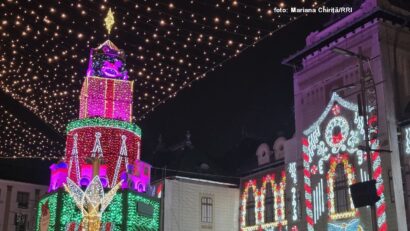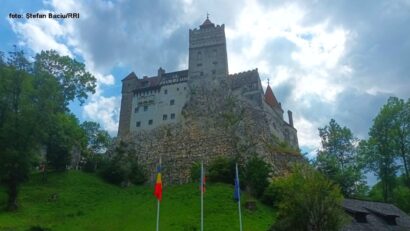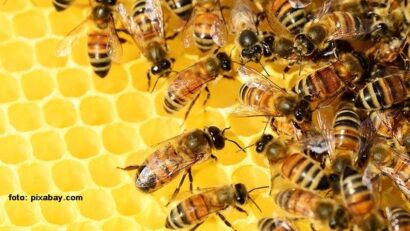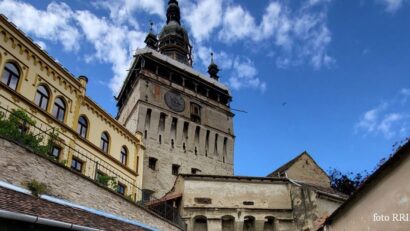Romanian villages
A trip to to some of the most famous Romanian villages, where folk traditions and customs have been preserved unaltered.

România Internațional, 29.10.2015, 13:50
Located in scenic landscapes, Romanian villages that we refer to have always been visitor-friendly. Nicolae Marghiol, who heads an association called “The Most Beautiful Villages in Romania”, tells us why these places are worth seeing:
“This is one sure way to discover traditional houses, customs and traditions and also grandmother’s most delicious dishes. It all started in France in the 1980s. It was there that the first such association, ‘The Most Beautiful Villages in France’ was set up. The model was later taken over by other European states, like Italy, Spain, Belgium, and Romania. The most beautiful Romanian villages in every part of the country are identified based on several criteria, such as traditions, customs, and gastronomy. These villages need to be promoted, to be presented to tourists. This is also a way of developing agro-tourism, farming and non-farming activities. We also try to prevent young people from leaving these villages, to make sure this heritage is not lost.”
The Romanian traditional village must be kept as it is and must be protected from modernism, says Nicolae Marghiol. There are foreign tourists who come here to visit precisely for this purpose. Prince Charles himself came for the same reason, for the wonderful sounds of nature, for biodiversity, for traditions and customs, something that Romania still has plenty of. But how does a tourist’s trip to Romanian villages unfold?
Nicolae Marghiol: “I first pick tourists up from the airport. Then I offer them a trip by traditional horse-drawn cart to Wallachia, Transylvania, Bucovina and Maramures, and help them discover the beauty of traditional villages. We spend time admiring traditional houses, local customs, we cook trout and the traditional Dobroged salad. Then we climb the mountain and pick up truffles and forest fruit. One thing I know about foreign tourists is that they want to get in touch directly with the locals, with peasants. They are interested in simple things. “
In some of these villages, museums are being set up to preserve traditional heritage.
“What we promote is niche tourism. Tourists contact us via embassies. Most of them leave with a very strong impression. As you already know, every tourist destination needs to also sell a story in order to be successful. In Romanian villages legend is still alive. We have nature, we don’t need to improvise. Fruits are organic and it’s a pleasure to taste them. Tourists come to Romania with a rather negative image of the country in mind, but as soon as they discover our unique traditions and customs and the beauty of the places, they are nothing but amazed. It’s true that in ten years’ time we could become Europe’s leading agro tourist destination. We have several villages such as Carlibaba, Dragus and Polovragi, from three different Romanian counties, that have been recognized by the European Commission as European Destinations of Excellence. They are villages with traditions, guesthouses, customs, which have preserved the traditional architecture, dances and folk costumes.”
Ciocanesti is one of the villages on top positions in most rankings. It has been declared a museum-village and, according to head of the National Museum of Painted Eggs, Marilena Nita, it is a place like no other.
“It is unique in Romania and very likely in Europe, because of its houses adorned with traditional motifs. These motifs can be seen not only on houses, but also on the traditional costumes and the painted eggs in Ciocanesti. Ciocanesti got the prize for the most beautiful village in Romania. Also, the landscape on the Suhard Mountain is absolutely beautiful. For tourists who visit the area in winter, we have a skating rink, a ski slope, we can set up campfires and we organize horse-drawn sleigh trips. There are 15 certified guesthouses in the village. We can accommodate around 300 people in the village and many more in the neighboring villages – Cârlibaba, Vatra Dornei, Câmpulung.”
Sibiel is another beautiful village located at the foot of the mountain, in an idyllic Transylvanian landscape. It is renowned for its glass icons, which have been put together in a museum of their own, hosted by the former parochial house of the Holy Trinity Church. The church itself is a museum. Museum curator Valerica Nitescu tells us more about it:
”The church was built in 1765 and it was fresco-painted ten years later. In time, the smoke from the candles, the dust and the passing of time blackened the painting. Villagers in Sibiel wanted a bright church and decided to cover the painting with five layers of whitewash. It was only in 1965 that two specialists removed the whitewash and brought the original painting back to light. After having cleaned the whitewash from the walls of the church, Father Oancea thought about putting Sibiel in the tourist circuit. On the Epiphany Day, when he blessed the houses of Orthodox believers in the village, he got to see beautiful icons, woven fabrics and furniture pieces and in 1969 he asked the villagers to donate some of these objects to set up a museum.”






























